© 2010-2021 by Fine Arts of the Southwest, Inc. All rights reserved.
Unauthorized reproduction or use is strictly prohibited by law.
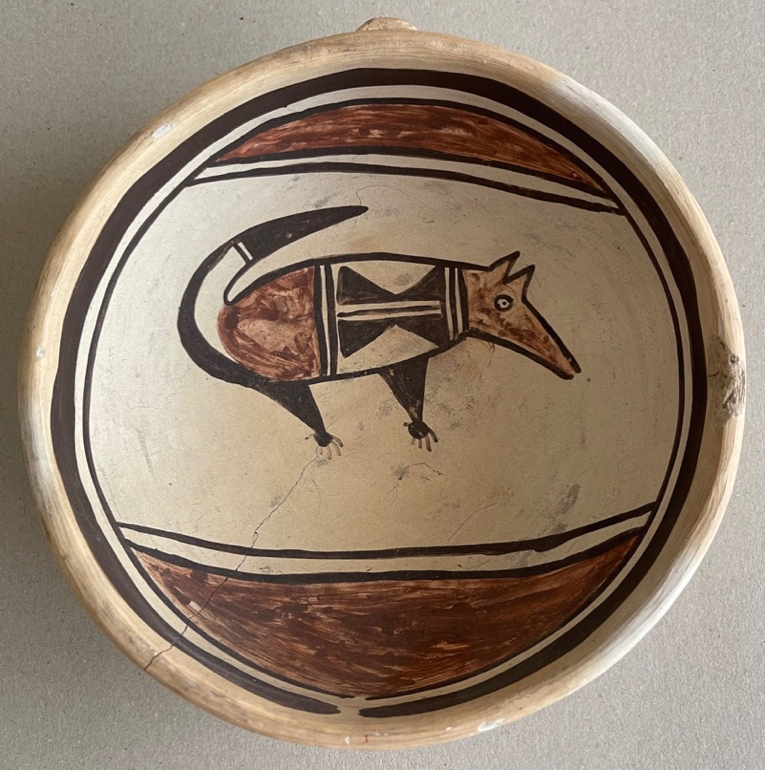
"Excellent piece. This is a First Mesa ceramic c. 1910 of a badger who is a supernatural gift-burden seen in Awatovi Kiva Murals.”
-Historic Hopi pottery authority, Edwin L. Wade, Ph.D
A historic Hopi pottery bowl with an
image of “Honani”, the badger, c. 1910
Badgers are extremely significant and deeply historic creatures to the Hopi people. The Badger Clan or “Honani” is one of the Hopi’s four most important and revered ancestral clans, and, in this capacity, they are responsible for maintaining some of the Hopi’s most important ceremonies like the annual “Powamu-a” or “Bean Dance” and for preserving some of their most important sacred shrines such as “Kisi-wu, the so-called “spring in the shadows”, the source of the Hopi’s sacred spruce tree boughs worn by many Hopi kachinas.
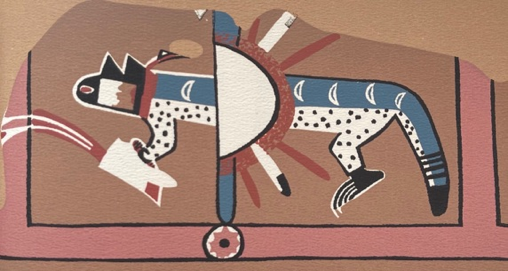
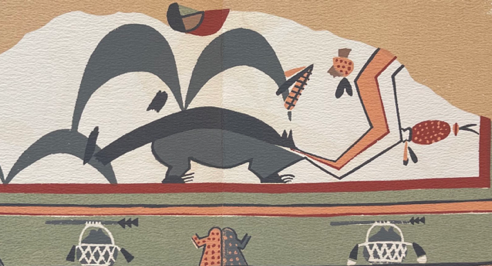
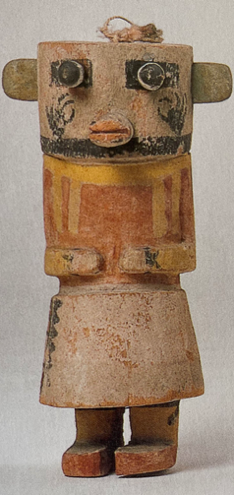
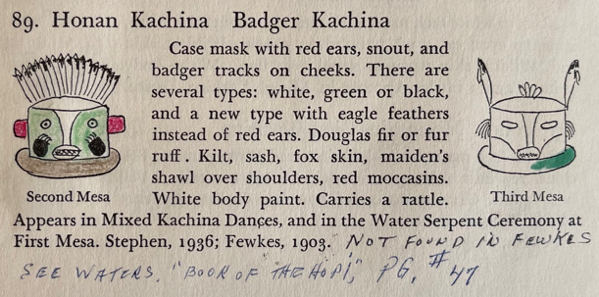
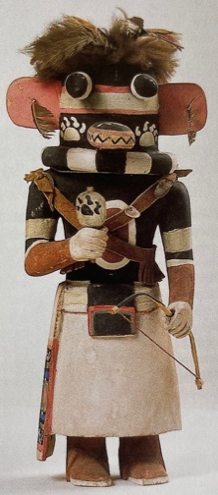
Two re-creations of ancient Awatovi painted kiva murals with badger images, c. 1500-1550 A.D.
Photo sources and © “Kiva Mural Decorations at Awatovi and Kawaika-a by Watson Smith, Peabody Museum, Harvard University, 1952. Illustrations by Louis Ewing.
This wonderful old Hopi pottery bowl recognizes the historic importance of The Badger Clan by presenting a powerful graphic depiction of this powerful creature. The badger is depicted here in a dramatic stylized Sikyatki-period pottery style (1325-1625 A.D.) flat perspective very similar to the manner in which he was portrayed hundreds of years ago in the prehistoric Hopi painted kiva murals in the now-ruined 14th-17th Century Hopi villages of Awatovi and Kawaiika-a on Antelope Mesa as seen above. Befitting its great importance, the Badger Clan also has its own kachina representation, “Hon” or “Honan”, as seen below, who appears during mixed Kachina dances in villages on all three of the Hopi mesas. The Badger kachina is one of the most recognizable and prominent of all the Hopi kachinas, revered for his knowledge of herbs and healing.
At left and right, historic Hopi kachina dolls of the “Honan” (Badger) Kachina. At center, description of “Honan” (Badger) Kachina from Harold S. Colton’s seminal volume “Hopi Kachina Dolls”.
Left and right photo source and © Horst Antes, “Katsinam, Figuren der Pueblo-Indianer Nordamerikas”, 1980..
Center photo source and © “Hopi Kachina Dolls” by Harold S. Colton, UNM Press, 1959, pp. 40
“The badger clan is one of the foremost important Hopi clans. It is custodian of the sacred spruce, the most powerfully magnetic of all trees. During Niman Kachina, when a member of each of the four clans takes position about the kiva to represent one of the four cardinal directions, it is a badger who stands to the north.”
-Frank Waters and Oswald “White Bear” Fredericks,
”The Book of The Hopi”, Viking Press, 1963, pp. 47
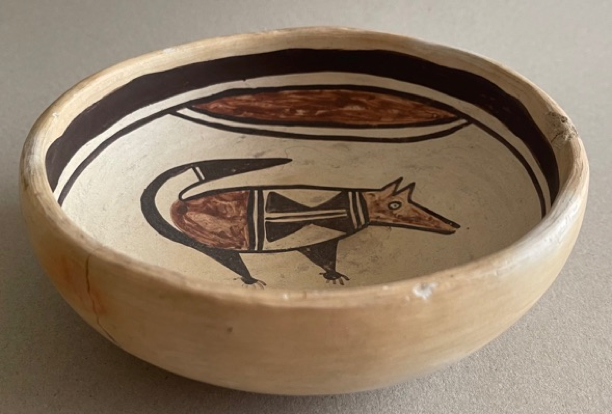
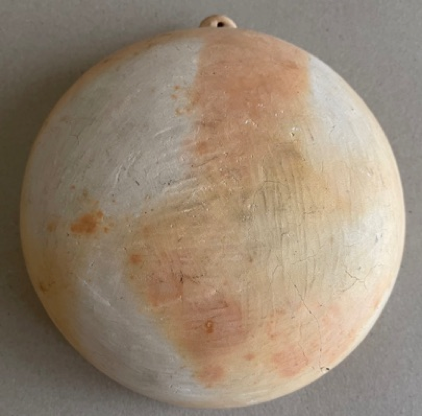
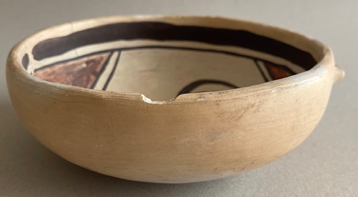
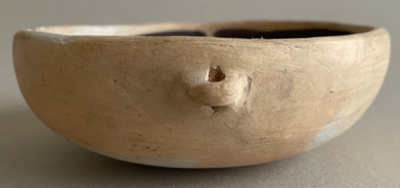
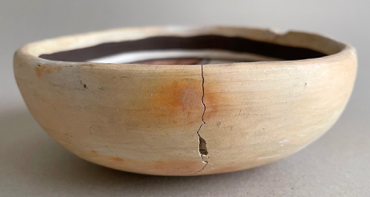
This bowl was very beautifully made by an unknown, but obviously very talented potter, it is very finely formed
and potted, extremely well-painted and precisely and carefully stone polished all over after all of which it was skillfully fired using high-temperature Lignite coal which gives the bowl its lovely whitish-yellow firing “blushes”.
The medium-sized bowl measures 6 1/2” in diameter and is 2” in height. It is in extremely good original condition, particularly for its 110 or so years of age, with no restoration or overpainting in evidence under UV-light examination. There is one un-restored 3” long crack running from the rim into the interior and one chip to the rim. These minor damages could be easily repaired by a professional restorer, if desired, at a relatively minimal cost.
This unique bowl is a very beautiful and very striking piece with a historic and culturally significant painted design.
Price $1,750
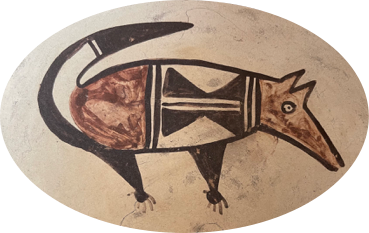
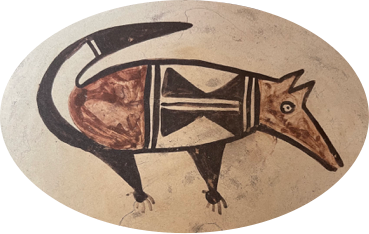
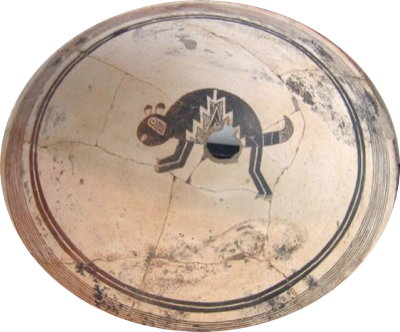
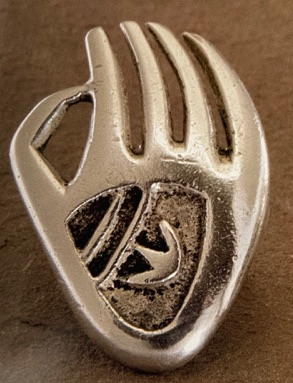
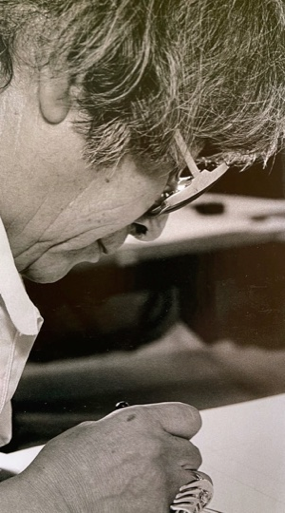
Badger image in a Classic Mimbres Culture pottery picture bowl, Southern New Mexico, c. 1000-1100 A.D.
There is circumstantial evidence of Mimbres Clan migration to Hopi in the 12th-13th centuries based on pottery and other similarities and also to Pottery Mound, New Mexico, a prehistoric site very closely related to Hopi.
Photo source and © Houston Museum of Fine Art
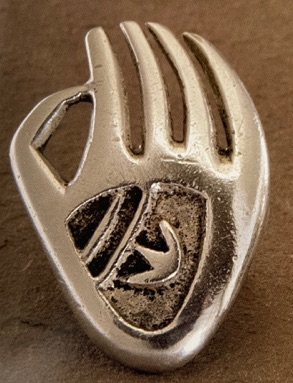
Renowned Hopi jewelry artist, Charles Loloma (1921-1991) was a proud member of the Hopi
Badger Clan and his famous, distinctive “Badger Paw” ring design is beautiful evidence of this.
Photos source and © Martha H. Struever, “Loloma Beauty is His Name”, Wheelwright Museum, Santa Fe, 2005
